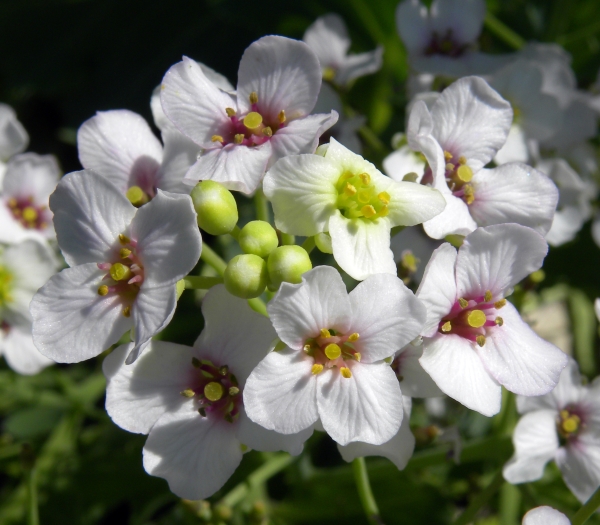Sea Kale
(Crambe maritima)
Sea Kale (Crambe maritima)
/
/

Wilson44691
CC BY-SA 3.0










































Estimated Native Range
Summary
Sea Kale is valued for its ornamental foliage and showy flowers, as well as its historical use as a vegetable, where young shoots are blanched and eaten like asparagus. It is suitable for border planting, coastal gardens, and gravel gardens, where its tolerance for salt spray and wind is advantageous. This plant thrives in full sun and requires moderate watering, performing best in well-drained soils of various types. While it is generally low-maintenance, Sea Kale can be affected by clubroot and flea beetles. It is also important to note that, despite its common name, Sea Kale is not related to kale and should not be confused with the common vegetable.CC BY-SA 4.0
Plant Description
- Plant Type: Herb
- Height: 2.5-3 feet
- Width: 2-2.5 feet
- Growth Rate: Moderate
- Flower Color: White
- Flowering Season: Summer
- Leaf Retention: Deciduous
Growth Requirements
- Sun: Full Sun
- Water: Medium
- Drainage: Slow, Medium, Fast
Common Uses
Bee Garden, Drought Tolerant, Edible*Disclaimer: Easyscape's listed plant edibility is for informational use. Always verify the safety and proper identification of any plant before consumption., Fragrant, Groundcover, Salt Tolerant
Natural Habitat
Native to coastal regions of Europe, including the British Isles, the Black Sea, and the Mediterranean, as well as parts of the Caucasus and western Asia, typically found in maritime habitats such as sea cliffs and shingle beaches
Other Names
Common Names: Crambe, Sea-Kale, Seakale, Ysgedd Arfor, Strandkål, Küsten-Meerkohl, Strandkohl, Meerkohl, Weisser Meerkohl, Col Marina
Scientific Names: , Crambe maritima, Crambe pontica, Cochlearia maritima, Cakile pontica, Caulis maritimus, Crambe gigantea, Crambe suecia, Crambe suecica, Crucifera maritima,
GBIF Accepted Name: Crambe maritima L.